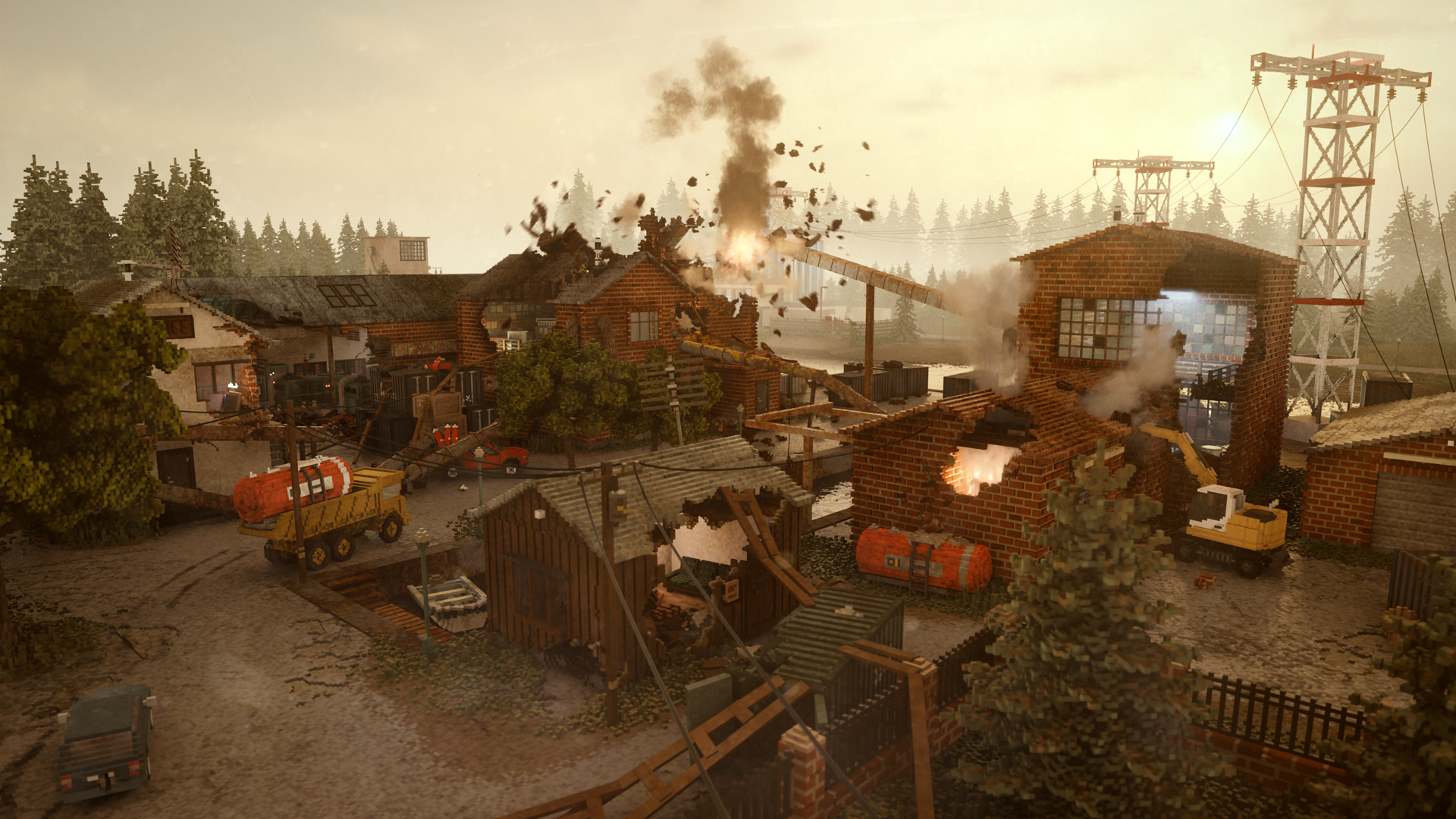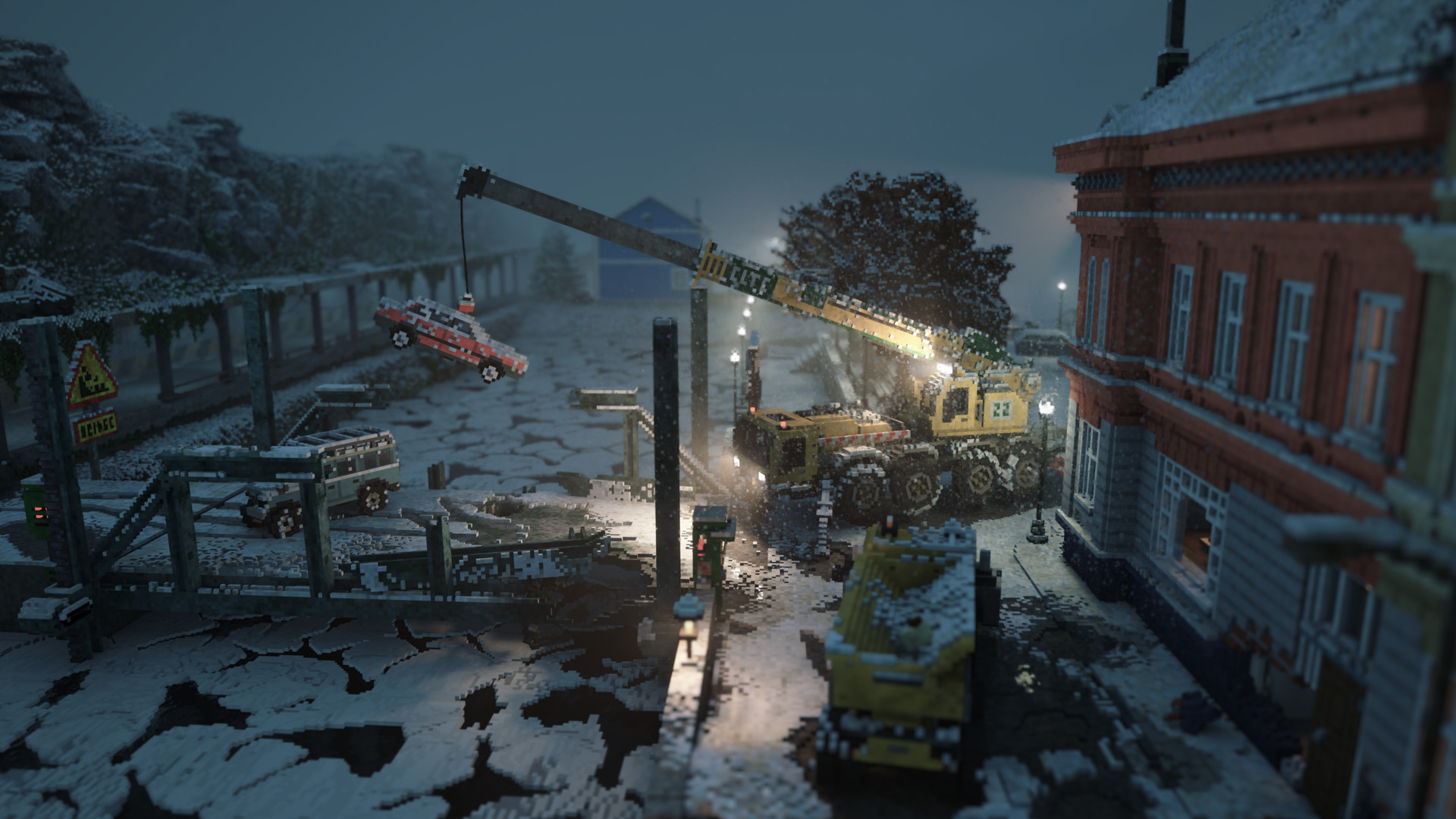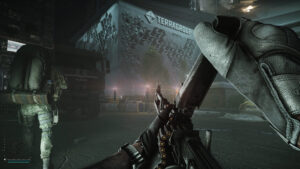
After nearly two years in early access, Teardown from Tuxedo Labs is finally in its completed state with new maps, tools, and even hidden areas as well as some fixes based on all the feedback they’ve received. Teardown is a game that often nudges you towards thinking outside of the box, which is to say outside of normal video game limitations. It gives you things to steal, and puts you in charge of achieving that by any means necessary. Usually this entails destroying walls, doors, and even entire buildings and creating the quickest path possible to get out of the situation before you get caught. Some environmental hazards and different arrangements of things can make some situations more complex than others, but at the end of the day your goals are largely the same. Destroy the things, get the other things, and get out. It’s not a lot to base a whole game on, but it’s still a fun concept and Teardown handles it well while squeezing about as much enjoyment out of it as they could have with a handful of other variables that they shuffle around in different levels.
Destroying everything in your path to get to the object you’re after might sound easy at first but it’s rarely as simple as that. Some things can’t be destroyed easily, and require either an explosive or a vehicle to bust through, and sometimes getting those explosives or vehicles to that area is a puzzle in and of itself. So, any simple action can quickly become a multilayered puzzle. Also, some things you’ll want to leave intact as that might help you in your escape like some pipes that connect two buildings or a rooftop that makes exiting a building quicker. This requires a lot of planning and thinking ahead, which seems to be a bit of an oxymoron for a game that is tailor made for mindless destruction. As levels become more complex and ask more things of you, you’ll often spend much more time planning your escape and rehearsing your exit path than you will actually tearing anything down.
"Destroy the things, get the other things, and get out. It’s not a lot to base a whole game on, but it’s still a fun concept and Teardown handles it well while squeezing about as much enjoyment out of it as they could have with a handful of other variables that they shuffle around in different levels."
This can create its own sort of fun, but it’s not really what I was expecting a game called “Teardown” to require of me so much. The process of breaking down the right walls and forming the path of least resistance isn’t as fun as it could have been either, as the somewhat floaty jumping and finicky physics of certain objects can be… well… finicky. For every couple of minutes of enjoying myself busting down a wall or demolishing a building, there was a moment or two of just trying to get a box to sit where I wanted it to so I could reach a specific point. Even when the game was trying to let me off the leash more, I still found myself worrying about whether or not I might need any given thing to be structurally intact later, which kept me from thoroughly enjoying it.
With all of Teardown’s destructive capabilities, it is a little disappointing to see so much of what you do funneled into meticulous plotting of tasks that require more precision than the game seems built for. This doesn’t stop a successfully completed mission from feeling satisfying, but it does rob the actual execution of many of the levels of some of their potential to be wild and crazy fun. The kicker here is that once you grab anything that doesn’t legally belong to you, a timer for one-minute starts counting down. So whatever else you need to do, everything from grabbing other items to getting to your getaway vehicle, all have to fit within 60 seconds or you’ll get caught and the mission will fail.
This is where everything you’ve done so far is put to the test. Your level memorization, the paths you’ve created, everything. It can be a rather alarming change of pace going from taking your time for half an hour and planning your route to suddenly having everything on the line with only a minute to wrap everything up. It’s a palpable tension that might actually be the most fun part of the game, assuming you prepared for it. If you didn’t, you can certainly try to improvise but I found that most of the time if it came to that then I would almost certainly lose. Failing to prepare is indeed preparing to fail, as they say.
"It can be a rather alarming change of pace going from taking your time for half an hour and planning your route to suddenly having everything on the line with only a minute to wrap everything up. It’s a palpable tension that might actually be the most fun part of the game, assuming you prepared for it."
Replaying levels to get your time down creates a little bit of incentive to try them again if the experience really clicks with you, as well as looking for hidden valuables and secret areas scattered around the levels. These things don’t really add up to much other than your own satisfaction and completionism, but it does make the game feel a little fuller. You will also come across different tools that can make previously difficult tasks a little easier, but you’ll always be balancing things you want to do with what you are able to do at any given time. It’s pretty clear Tuxedo Labs has done their best to get every last drop of possibility out of this game’s exceedingly simple concepts, and the effort is certainly commendable if nothing else.
Between levels you’ll be at your place where you can watch the news and read emails that contain your missions. Nothing crazy in terms of a hub world but it is a good way to get a breather between the levels and serves as a nice way to work a little bit of a story in.
The voxel art style for Teardown makes a lot of sense and feels like a great fit for the destructible nature of the game. Not just because it makes the game run better on more modest machines, but also because it just makes the game’s many surfaces more fun to look at as you’re demolishing them. That said I did encounter some performance issues when things were particularly hectic, at one point it even gave me motion sickness which I am normally not prone to. I reckon more beefy PCs will run it better, but my experience was inconsistent enough for me to feel like it’s worth mentioning.
"The voxel art style for Teardown makes a lot of sense and feels like a great fit for the destructible nature of the game."
Teardown is a puzzle game that might seem like an action game on the surface. Yes, destruction is the main gameplay element, but focusing all of that destructive possibility into a laser to achieve a specific goal is really what you’re doing. Errors can often be solved with simply changing your own thought process, as there is always more than one way to get whatever you’re doing done. Despite the respectable job the developer has done with stretching this concept out to its logical conclusion, I still wish that there was a bit more meat on the bone and better performance across the board. That said, as it stands, Teardown isn’t a bad way to tease your brain for a little while, and coming up with wacky solutions to basic logistical problems is a great hook, even if the fun factor isn’t as consistent as you might be expecting.
This game was reviewed on PC.
Fun destructibility; Moderate replay value.
Missions can become excessively slow and calculative; Performance isn’t great.


















